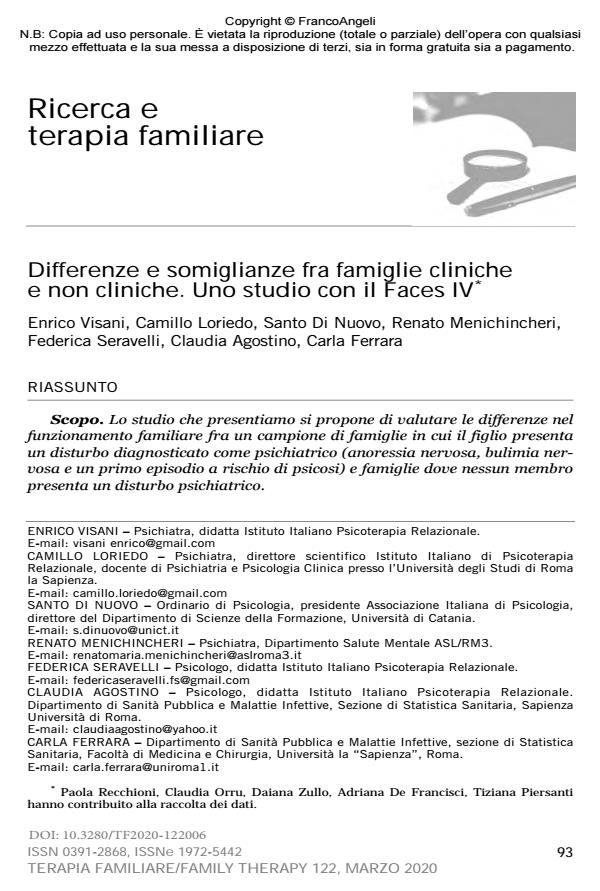Differences and similarities between clinical and non-clinical families. A research with Faces IV
Journal title TERAPIA FAMILIARE
Author/s Enrico Visani, Camillo Loriedo, Santo Di Nuovo, Renato Menichincheri, Federica Seravelli, Claudia Agostino, Carla Ferrara
Publishing Year 2020 Issue 2020/122
Language Italian Pages 18 P. 93-110 File size 213 KB
DOI 10.3280/TF2020-122006
DOI is like a bar code for intellectual property: to have more infomation
click here
Below, you can see the article first page
If you want to buy this article in PDF format, you can do it, following the instructions to buy download credits

FrancoAngeli is member of Publishers International Linking Association, Inc (PILA), a not-for-profit association which run the CrossRef service enabling links to and from online scholarly content.
Purpose. The present study aims to evaluate the differences in family functioning between non-clinical and clinical families samples; in the clinical families sample there is a member with a psychiatric disorder (anorexia nervosa, bulimia nervosa and a first episode at risk of psychosis). Methods. The non-clinical families sample consists of 50 families and the clinical sample of 60 families and for each family unit the data of both parents and a son were collected. The tools used were: a socio-demographic sheet, a clinical sheet for the clinical population and the Faces IV questionnaire validated in the Italian version. The Faces IV questionnaire evaluates family through 8 scales: Balanced cohesion, Balanced flexibility, Disengagement, Enmeshment, Rigidity, Disorganization, Communication and Satisfaction. Results. The comparison between non-clinical and clinical families in Global Family Functioning showed a smaller difference than expected; while values related to parental agreements, family perception by each member and single questionnaire scales values showed statistically significative differences. Conclusions: Clinical and non-clinical families evolutionary pathways follow different ways, even if the differences in global family functioning are less than expected.
Keywords: Faces IV, family research, family therapy, non clinical family, eating disorders, first psychotic disorders.
Enrico Visani, Camillo Loriedo, Santo Di Nuovo, Renato Menichincheri, Federica Seravelli, Claudia Agostino, Carla Ferrara, Differenze e somiglianze fra famiglie cliniche e non cliniche. Uno studio con il Faces IV in "TERAPIA FAMILIARE" 122/2020, pp 93-110, DOI: 10.3280/TF2020-122006